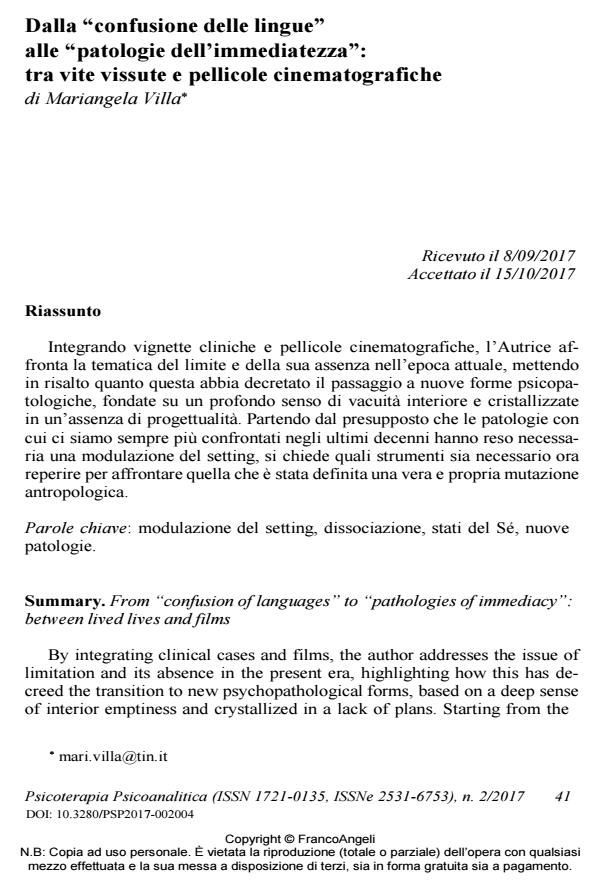From "confusion of languages" to "pathologies of immediacy": between lived lives and films
Journal title PSICOTERAPIA PSICOANALITICA
Author/s Mariangela Villa
Publishing Year 2017 Issue 2017/2
Language Italian Pages 14 P. 41-54 File size 195 KB
DOI 10.3280/PSP2017-002004
DOI is like a bar code for intellectual property: to have more infomation
click here
Below, you can see the article first page
If you want to buy this article in PDF format, you can do it, following the instructions to buy download credits

FrancoAngeli is member of Publishers International Linking Association, Inc (PILA), a not-for-profit association which run the CrossRef service enabling links to and from online scholarly content.
By integrating clinical cases and films, the author addresses the issue of limitation and its absence in the present era, highlighting how this has decreed the transition to new psychopathological forms, based on a deep sense of interior emptiness and crystallized in a lack of plans. Starting from the assumption that the pathologies with which we have been confronted more and more in the last few decades have required a modulation of setting, she asks what tools it is now necessary to find in order to address what has been termed an anthropological mutation.
Keywords: Setting modulation, dissociation, self states, new pathologies.
Mariangela Villa, Dalla "confusione delle lingue" alle "patologie dell’immediatezza": tra vite vissute e pellicole cinematografiche in "PSICOTERAPIA PSICOANALITICA" 2/2017, pp 41-54, DOI: 10.3280/PSP2017-002004